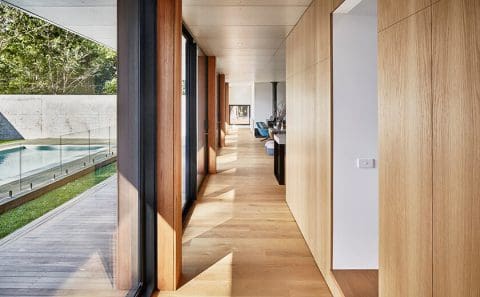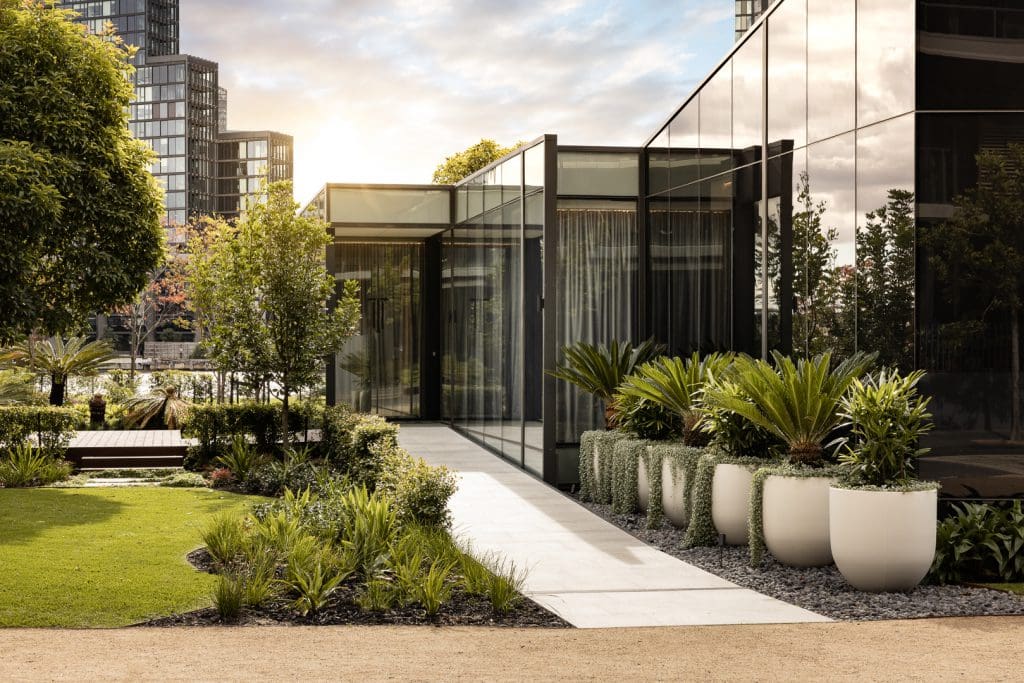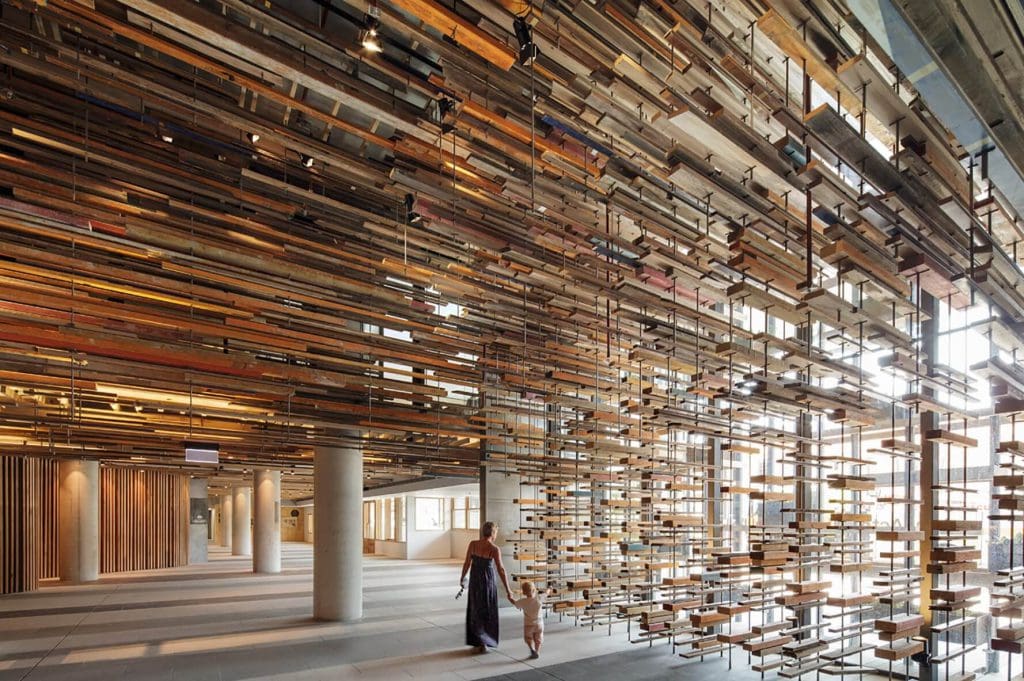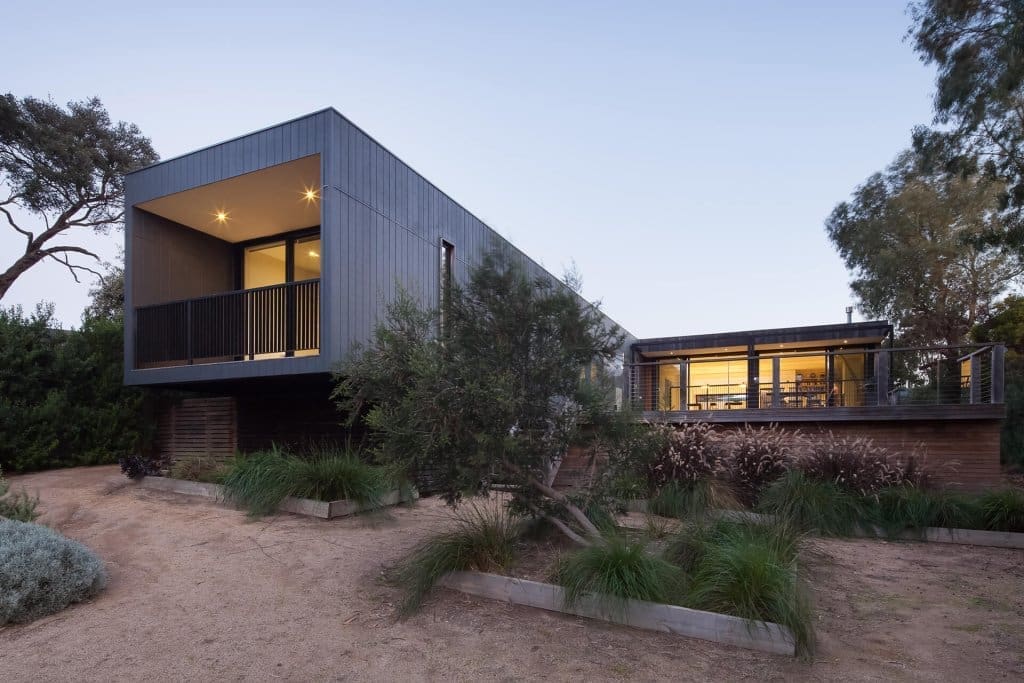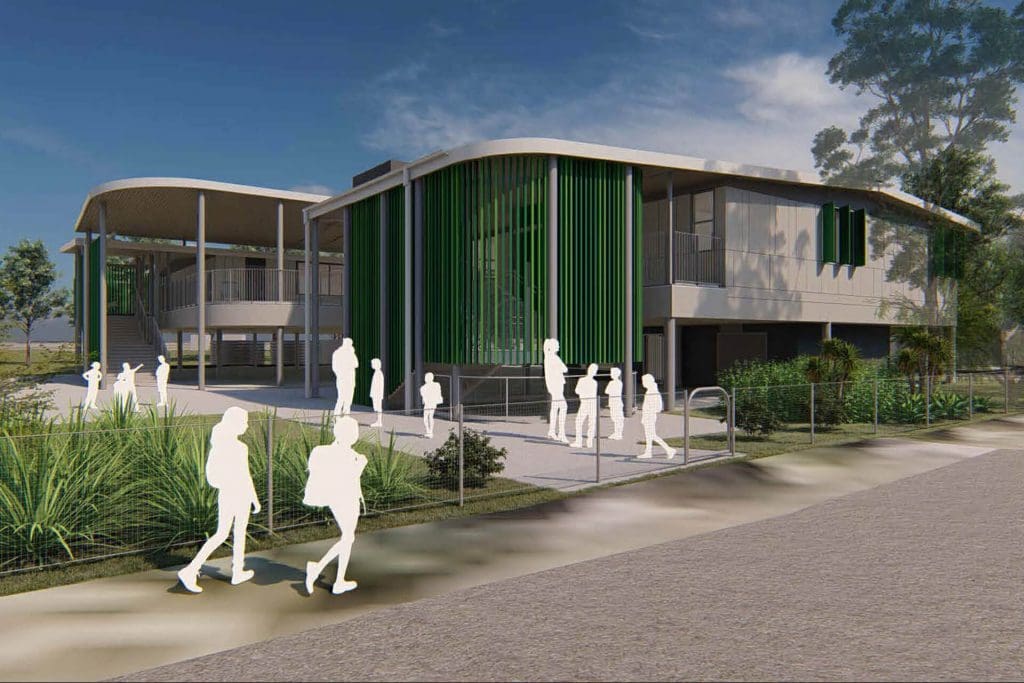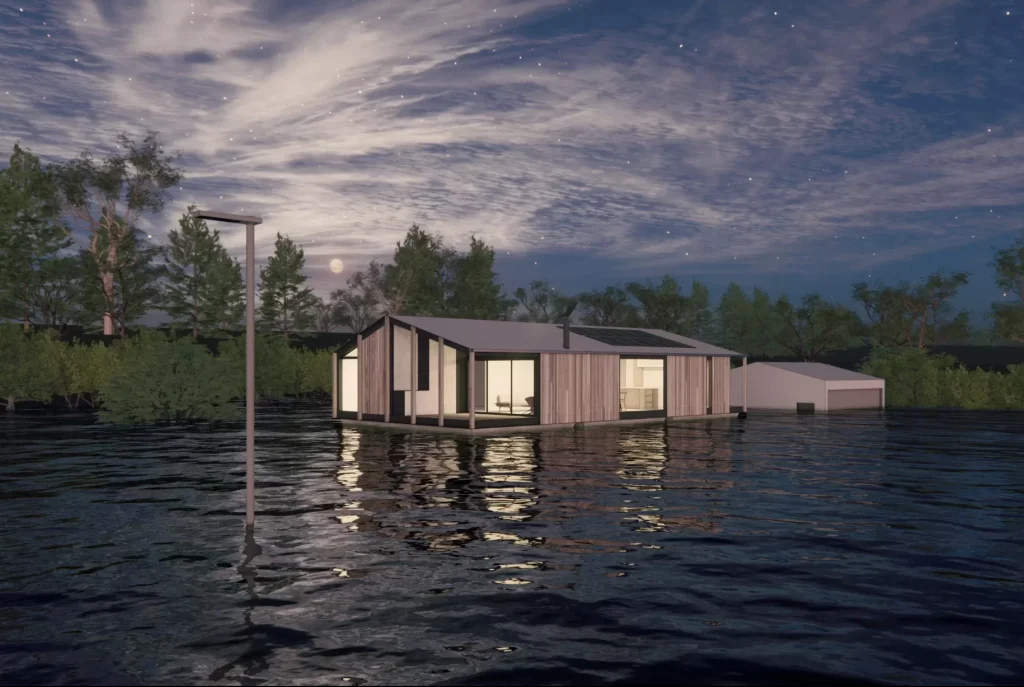Tiles, Timber Or Carpet?
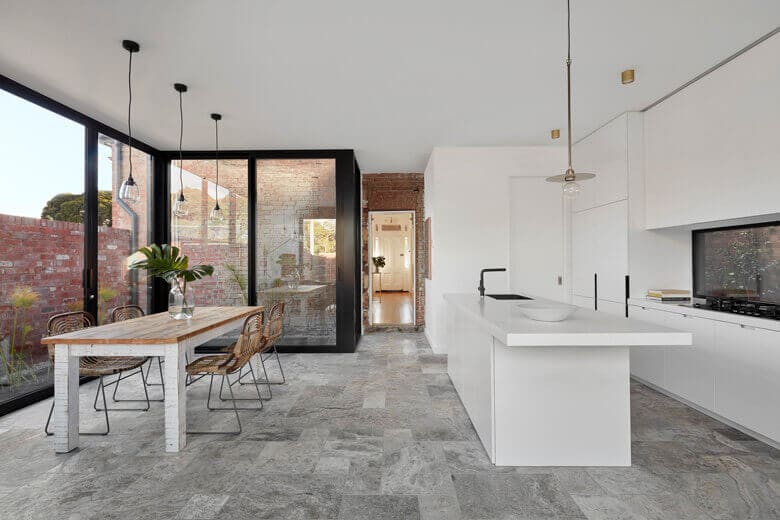
Flooring is an important pillar of interior design and can affect both the look and functionality of a space. A room’s furniture, colour palette, amount of traffic and desired comfort will largely determine the flooring best suited to a space. Tiles, timber and carpet are three of the most popular kinds of flooring, any of which – if chosen and installed well – can add value to a space in terms of its style, flow and feel.
When it comes to making a decision, many of our clients can find the flooring choices available somewhat overwhelming. So we’ve taken a moment to outline some of the advantages and disadvantages of tiles, timber and carpets to help in the early stages of design decisions.
Tiles

Tiles – an enduring feature of many bathrooms, laundries and kitchens – are an extremely versatile style of flooring and are available in a multitude of colours, patterns, sizes and textures.
NATURAL STONE
Often applauded for their beauty and durability, natural stone tiles can be used for both walls and floors and are commonly made of granite, marble, limestone or travertine. It’s no surprise given their name that natural stone tiles tend to inject the textures and colours of nature into a space. From warm and earthy tones to sophisticated black and white marble, natural stone can be effectively utilised in all kinds of modular homes. There’s also a variety of options for finishing including polishing, honing, brushing and antique flaming.
Granite is a hard and durable natural stone that boasts a warm, classic look and feel. It’s a great low-maintenance tiling option that can be more affordable than other kinds of stone flooring. However, due to its porosity granite may require polishing and sealing regularly.
Marble, on the other hand, is one of the more expensive varieties of floor tiles but is also one of the most beautiful, offering a classic, timeless aesthetic. Yet similar to granite, it is susceptible to scratches.
Lastly, travertine is quite rustic in style and is a great addition to any country style or nature-inspired interior. All kinds of natural stone tiles age gracefully over time, and can be revived and resurfaced periodically.
Concrete
Tough and resilient, concrete is known for its durability and for this reason is often used in commercial spaces such as warehouses and garages. Its strength enables it not only to withstand great weight and pressure – such as large vehicles and heavy traffic – but also, makes it difficult to damage when in the home. Concrete is therefore, an excellent choice for a very active household with high heels, kids and pets! While concrete is durable and easy to maintain, it does require proper sealing and waxing to minimise its susceptibility to moisture penetration. If not adequately sealed on both the top and bottom surfaces, moisture might be absorbed into the concrete’s pores and will lead to the growth of mould or mildew. In colder climates, this moisture can freeze and thus expand, potentially cracking the tiles – though in most areas of Australia, this is not a major concern.
Terrazzo
Terrazzo tiles are a favourite for our prefab homes. A composite material, terrazzo typically combines chips of glass with natural aggregates such as granite, marble or quartz that are held together by a concrete or resin base. The result is a speckled appearance that is more interesting than ceramic and more resilient than many other tiling materials. Terrazzo is a versatile material, available in any desired colour mix and suitable for both indoor and outdoor spaces. It can be honed, polished or sandblasted depending on your desired finish and can add a timeless, unique aesthetic to traditional and modern home designs.
In addition to its classic aesthetic value, terrazzo is a cost-effective tiling choice thanks to its excellent durability and longevity and the ease with which it can be cut and worked with. Terrazzo is both heat and water resistant and with little maintenance, can last a lifetime. Its high resistance to wear and compression make it suitable for high-traffic areas so it is common place in airports (not to mention award-winning residential homes worldwide).
When considering terrazzo tiles, quality is an important factor. The production of Italian-made terrazzo is dictated by strict guidelines to ensure that its quality is not compromised. However, cheaply produced terrazzo may not offer the same durability – improperly produced terrazzo can demonstrate brittleness, porosity and undesirable discolouration.
Timber
Timber is arguably one of the most desirable flooring materials, boasting versatility, beauty and durability. Timber floors offer a host of benefits such as their luxurious and earthy aesthetic quality, neutral tones that match with most furniture and great longevity. Timber floors tend to be expensive to install and maintain but, in the end, can also be great selling point when it comes to valuing your home.
In terms of their maintenance, timber is relatively easy to clean – sweeping or vacuuming as well as occasional mopping should suffice. However, they may require semi-frequent refinishing due to the ease with which they tend to be scratched, scuffed and blemished, particularly in homes with children and pets. That said, this sanding and refinishing can rejuvenate timber many times over for an extended lifespan.
When opting for timber floors in your home, there are three points to consider: colour, grade and board width.
Colour
There are many different coloured varieties of timber to choose from – oak, fir, birch, walnut, cherry and beech, among others. However, species is not the only determining factor of timber flooring’s final colour. All timber can be sanded and stained to suit your design requirements.
Choosing the right colour of timber for your modular home is extremely important to the overall look and feel of the space as the colour of your floors can affect both the apparent size of a room, as well as the flow of your whole home. In choosing the right colour, the height of the ceiling, the size of the room and the colour and texture of the walls should all inform your decision. In rooms that are small or low-ceilinged, opting for light coloured floors is a canny way to counterbalance their size and make them feel larger.
In a similar vein, the colour of a room’s floors can also serve to build a desired ambience. For example, darker tones are popular in modern designs whereas warm, golden tones can accentuate a room’s sense of cosiness. In large commercial office spaces, deep, bold coloured timber floors work well and can become a pivotal element of the décor. Regardless of your desired aesthetic and ambience, consider the colour contrast between your floors, walls and furniture as contrast is important to the overall coherence of a space.
Grade
Grading organises timber according to the prevalence of blemishes and natural features, and thus significantly impacts its appearance. Such features include defects such as gum veins, surface checking or cracking, insect marks, knots and past borer activity. Higher grades of timber minimise the appearance of such faults while lower grades permit them in greater numbers and sizes. The three grades are: select grade, medium feature standard grade and high feature grade.
Select grade, the highest of the three, allows only a small number of minor blemishes – such as short gum veins and small knots – so that natural details and discolorations don’t dominate the final appearance of the timber. Medium feature standard grade, on the other hand, permits more character than select grade, accepting a greater prevalence of gum veins, knots and discoloration. Lastly, high feature grade allows for the greatest number of defects which can differ the length of features permitted; gum veins may be longer, for example.
Board width
The width of boards you choose for your timber flooring can affect the overall look and feel of a room in the same way that their colour can. 3 inches (or roughly 7.6cm) is the most popular board width, creating an elegant, elongated feel in a room. Other narrow planks, ranging between 5-10cm wide, are chosen similarly for their sleek and sophisticated aesthetic. Wide planks, on the other hand, promise a unique and oftentimes rustic beauty that can’t be achieved with other board widths. Wide planks are the perfect solution to small rooms; they reduce the number of gaps in the floor and in doing so, create the illusion of greater space. For example, laying wide boards perpendicular to the longest side of a narrow room is a canny way to make the room appear wider and more proportionate.
Carpet
Carpet, especially in bedrooms, is without a doubt a popular flooring option. Different fibre and pile types play a huge role in both the function and aesthetic of each kind of carpet, so do your research before selecting a carpet for your home.
Fibre
Different kinds of fibre endow carpet with different characteristics so your lifestyle and desired aesthetic should inform your final choice.
Wool is an excellent carpet fibre choice for areas with heavy traffic, boasting strength, resilience and elasticity. It masks dirt and soil well, but does stain quite easily so households with children or pets should be wary of choosing wool. Wool is a great, environmentally friendly addition to sustainable homes however, and uniquely neutralizes indoor air by trapping contaminants.
Nylon, one of the most common carpeting materials, is available in an expansive array of colours and textures. Its elasticity makes it suitable for high-traffic areas, being able to return to its original shape even after being crushed by furniture for extended periods of time. Nylon outperforms most materials in terms of durability and is a wise choice for homes with kids and pets – it’s abrasion resistant and easy to clean. Nylon is, however, synthetic and can exhibit signs of fading.
Olefin is an aesthetically pleasing and inexpensive material and, like nylon, is great in active homes. Not only is it difficult to stain, but it is also chemical, moisture and fade resistant, so much so that it can even be used in outdoor areas. However, olefin does not regain its shape as well as nylon and due its low absorbency rates, does not dye easily.
Polyester is enjoyed for its luxuriously soft feeling underfoot and comes in many deep and vibrant colours. The material can be difficult to clean however, and can shed and mat down quickly.
Sisal is an excellent biodegradable and nontoxic choice for eco-friendly homes. It promises a natural, textural appearance that is suitable for high traffic areas and works well on stairs.
Corn might not be the first thing you think of when considering carpet options, but it certainly shouldn’t be overlooked – especially since its excellent stain and soil resistant properties are paramount. The corn is not the type of corn you would typically eat. Corn is grown, harvested and the corn sugar extracted. The corn sugar is then processed to produce a polymer which is used to manufacture yarn that is twisted and heat set. The result is a carpet that is easy to clean, family and pet friendly, soft to touch, durable and environmentally sustainable.
Pile
There are two basic types of pile: cut-pile carpet and loop-pile carpet. While the former offers a more luxurious feel underfoot, often described as plush or velvet, the latter has more functional benefits: durable, easy to clean and crush-resistant. There are various types of both cut pile and loop pile carpets to choose from and each has its own advantages.
For example, Saxony, a kind of cut pile, is very soft and suitable for formal areas but does not perform well under high traffic as it shows footprints very clearly. Textured cut pile is better suited to more active households; its two toned appearance and multiple tuft heights tend to camouflage dirt and footprints well. Frieze is the most expensive but also the most durable of the cut pile carpets, hiding footprints and lasting for up to 20 years in high traffic areas, if maintained well.
Sculptured carpet – also known as cut-and-loop – is made with both looped and non-looped tufts that serve to mask dirt and footprints thanks to a multi-faceted texture. Looped or Berber carpet has been made popular by its elegance and is made from uncut loops of yarn. When choosing a looped carpet however, note that those with smaller loops wear much better, as larger looped varieties tend to mat down quicker and can be more difficult to clean.
